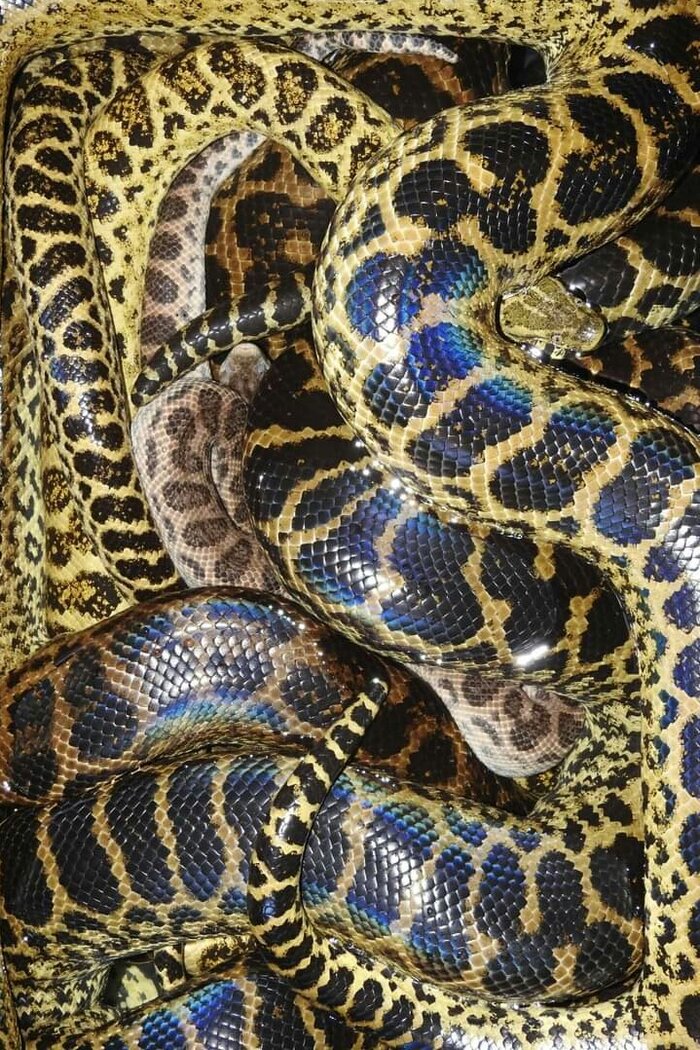Yellow Anacondas are found in Argentina, Bolivia, Brazil, Paraguay & Uruguay. These predators are semi-aquatic in nature and consequently enjoy a lifestyle in and around water, choosing to reside near streams and rivers. Their smaller size and yellow coloration allows them to compete in a drier environment with less resources than that of their green anaconda counterparts. Our enrichment areas are built to provide a similar yet safe experience free from other predators that may make a meal of them, as well as parasites & risk of injury through supervision.
Their diet is expansive. It commonly includes rodents, birds, amphibians, fish & other reptiles. As such we provide all of the above to our yellow anacondas as a critical part of their healthy development in responsible amounts. Pairing this with enriching activities such as climbing/swimming leads to healthy muscle growth. The diet of a male yellow anaconda differs from that of a female, with males consuming more lean prey items such as birds whereas the females consume more rodents.
A captive yellow anaconda’s temperament is a direct reflection of its keeper. While typically defensive when young, they quickly learn to recognize they aren’t in any danger around a patient, calm & consistent keeper. Emphasis should be placed on consistency. Prey-responses should not be confused with defensive behavior. We work with our yellow anacondas regularly to prevent any unnecessary stress from a lack of socialization.
While we do use enclosures to care for our yellow anacondas (the bigger the better), no enclosure could realistically provide the same amount of movement or enrichment opportunities they would have access to in the wild. As such, we make use of both enclosures and large enrichment areas to allow for proper development. These animals need access to a temperature gradient in order to thermoregulate; as a general rule of thumb they should be kept at around 79°F at the cool end of an enclosure to 89°F at the hot end. They require access to enough water to fully submerge themselves in. Enclosures should be kept clean, cross-ventilated & provide a humidity level of 60-80%.
While not as large as the more commonly known green anaconda, they are still large constrictor snakes capable of reaching 14 feet in length over the course of their lives. Males are significantly smaller in both size and length.
The above is only general information gathered over years of keeping the species. For the most accurate information on yellow anacondas possible, use tools such as google scholar to seek out peer-reviewed research.


